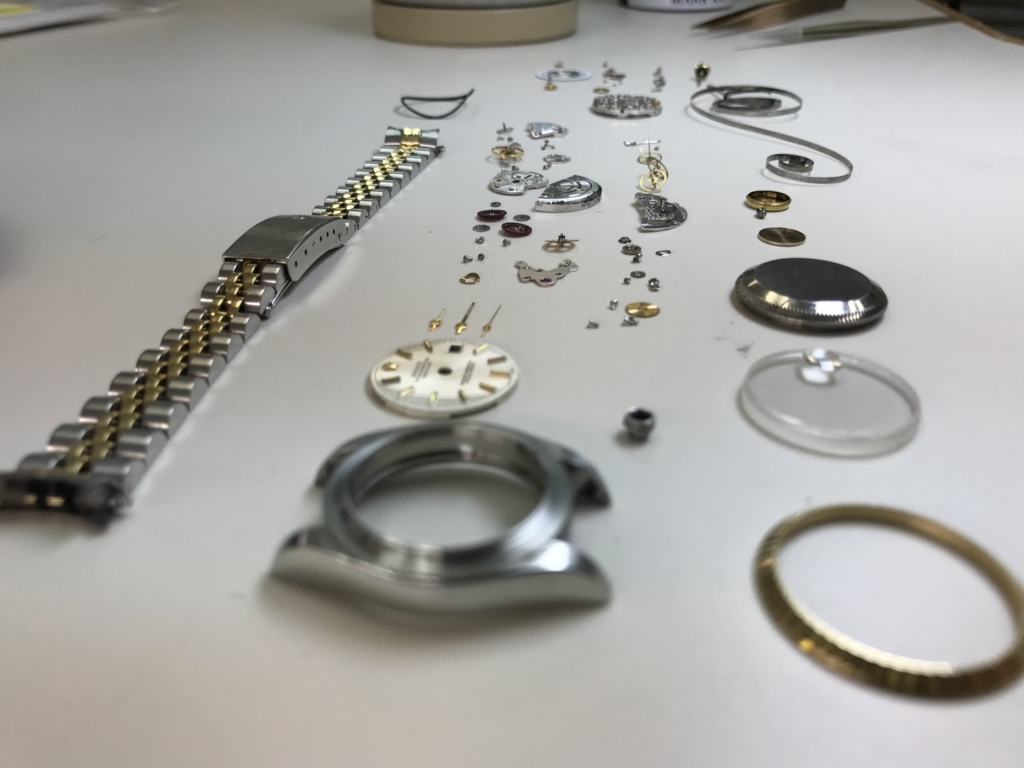We have partnered with Anthony L. also known as the No BS Watchmaker to bring you a new monthly series, Trade Secrets…View From The Bench. This will give you a fascinating ‘behind-the-scenes’ insight into the world of watchmaking. Anthony has a ‘no- nonsense’ approach and tells it ‘like it is’ as the author of 100+ No BS Watch Tips: For Watch Enthusiasts & Salespeople.
This month we hear about Anthony’s Three Principles of Watchmaking that focus on his method of teaching with a principles’ based approach backed up by practical actions. His approach to watchmaking is largely based on three key principles.
These are:
1. The principle of Investigation & Analysis
2. The principle of Mechanical Interlock
3. The principle of Skill
Through the scopes of these principles, he sees almost the entire world of watchmaking. Everything he teaches, every question he asks, and every answer offered makes at least one reference to one of these principles.
He believes that Watchmaking is as conceptual as it is practical. He often talks about how watchmaking translates into every facet of life. These principles can quickly speed up the path of any student in any endeavour and field.
Let’s take a look at each one in turn.
1. Investigation & Analysis
The ability to pause and reflect is such an immense tool. This is akin to forensic science. The ability to look at what we currently have in front of us and to deconstruct what, how, and why something occurred. We are often working backwards on a ‘crime scene’ to figure out possible causes and to have as much of the story as possible.
Once the causes have been confirmed, we then analyse to see if it is replicable. Can we replicate this problem? If I started from the beginning before all for this occurred, does my scenario work? We work backwards to see where the problem occurred and then attempt to replicate it. If it works, great, we’ve successfully figured it out. If it doesn’t, it’s back to the drawing board. You’ll find that it eventually turns into multiple A/B split testing scenarios and a ‘if-this-then-that’ game as well.
Let me run you through a possible scenario of an investigation during the initial take-in. If a customer brought in a watch recently serviced watch and it wasn’t running correctly, we need to investigate why.
1. Customer brings in a watch because it isn’t running.
2. You take it in and you analyse it thoroughly
3. You notice lots of huge dents and dings on the case and the sapphire crystal is also chipped.
4. You notice that the calendar date numbers aren’t aligning up in the date window.
5. Just that in itself has enough red flags to let me know that there could be possible impact damage already on this watch.
6. Customer complains that the watch doesn’t always run. It runs fine when it is flat on the table but doesn’t work when he is wearing it.
7. Since I already suspect impact damage, one of the first things I deduce is that there could be possible damaged pivots in the watch. Perhaps the one of balance staff pivot is broken.
8. Because I already have a possible cause, when I open it up, my goal is to confirm. If it is not confirmed, I continue to find possible causes that fit aforementioned issues.
2. Mechanical Interlock
How pieces fit into a puzzle. How everything is connected. How everything works together in unison. This gives us the mechanical ability to break anything down. To understand that for this wheel to work, it needs to be interlocked with another part. Once we understand this principle, we can always understand what a part is intended to do. In watchmaking, something is always connected to something else. One little part can have a ripple effect on the entire watch. We need the macro and micro picture to master this principle.

Taking apart a watch is easy in the grand scheme of things
3. Skill
The skill to perform the necessary task at hand. Everything in Watchmaking has subsets and niches. Tweezers, screwdrivers, creating wheels and parts, regulating, hairspring work, etc. are all subsets of watchmaking. Each one requires skill and precision. You’d be hard pressed to find a specific act in watchmaking that doesn’t require a refinement of skill. One of my biggest questions in this principle is “Do you have the skill set required to fix the problem efficiently and effortlessly?”
Think of this as a video game. When you start off, your character has zero abilities in everything across the board. As you play, your character starts getting experience ‘points’ in certain skill sets. You’ll realise what actions come easier for you compared to others. You also realise quickly in the game that there are many things you need to work on and that there are endless amounts of ability to ‘max out’ these areas. Our goal in watchmaking is to be 100% on everything possible.
Order your copy of the No BS Watchmaker here
Listen to the No BS Watchmaker Podcasts here
About Anthony L.

Anthony has worked on watches since he was 12 years old. He apprenticed under a master watchmaker at the time and boy did he hate it. He literally hated it. If you expected to read a story about a young kid who loved horology and devoted his whole life to it, look elsewhere.
He woke up at 5:30AM everyday to work on watches, went to school by 8AM, went home, went back to watches until dinner, ‘sleep, rinse, and repeat’. Others may say he is lucky to have had the opportunity, but he hated it at the time because he was a kid. All his friends woke up late and watched cartoons and played outside. He had to sit on a bench from morning to night.
He’s managed to convince himself that because he hated watchmaking at one point and respect the hell out of it now, he is pretty fair and balanced in his views.

